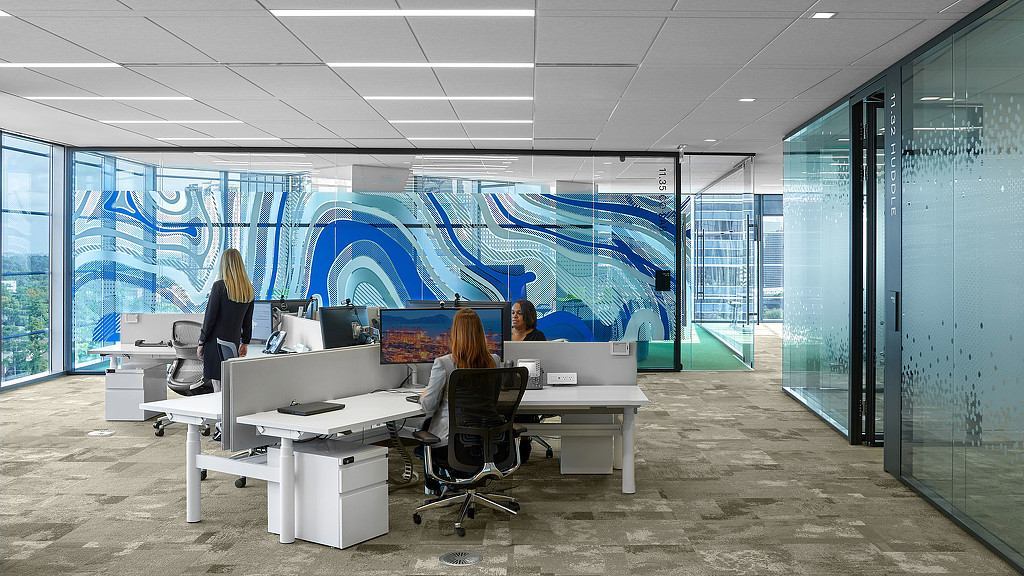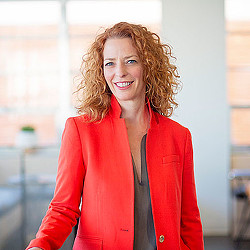What We Can Learn From the Energy Industry About Safety in the New Workplace
April 28, 2020 | By Lillian Giering, Vince Flickinger
Editor’s Note: This post is part of our ongoing exploration of how design is responding to the COVID-19 pandemic.
With the price of a barrel of West Texas Crude plummeting to its lowest level ever, the energy industry is at the forefront of our minds here at Gensler. Like many businesses in the country and around the world, the oil and gas industry will be finding a way to get back to work after the current storm passes. The good news is that the energy industry as a whole has a strong culture of safety that will serve them well in recovery.
In fact, as every business comes to terms with how to provide healthy and safe work environments for their people, we can take a cue from the energy sector. In a business where essential critical infrastructure workers — from pipeline operators to power grid line workers — are exposed to health risks and hazards on a daily basis, the safety practices in the energy industry can be adopted by many to cultivate a culture that prioritizes safety and wellness.
Below are five healthy workplace best practices:
1. Embed safety as part of your culture.Safety in the workplace should be more than just a checklist of rules, procedures, or policies — it should be embedded in an organization’s core beliefs, behaviors, and values.
CEO Darren Woods has explained how ExxonMobil reorganized its work to build a culture of safety. “A company's priorities evolve over time depending on business conditions and other factors,” he said. “A commitment to safety therefore, must be more than a priority, it must be a value — a core value that shapes decision-making all the time, at every level.”
To build a corporate culture of safety, it’s critical that organizations embed these values and beliefs across all levels of the organization — from leadership to front line workers. According to McKinsey, “Organizations that approach safety as a cultural value and a commitment to their people and their work can promote meaningful change that everyone across the organization can and should be a part of.”
2. Reevaluate density in the workplace.The idea of de-densifying the workplace to accommodate safe physical distancing guidelines is a pressing topic, mostly because offices have been focused on the opposite for the past few years. Now, we need to be aware of the surfaces we touch, the air we breathe, and how often we come in contact with our own face. Our physical environment greatly impacts these things.
When the coronavirus outbreak first became a threat, energy companies began minimizing person-to-person contact. They took strategic safety measures to sequester essential workers by off-setting their shift hours or days, thoroughly sanitizing work areas at each shift change, and regularly cleaning during the shifts at high touch points.
3. Take steps to maintain physical distancing.Physical distancing will soon find its way into the office space, just as it has for essential workers in other sectors. In its new resource guide, the Electricity Subsector Coordinating Council (ESCC) noted that many electric power companies and public utilities have taken “proactive steps to isolate their control center facilities from external visitors and non-essential employees early in the pandemic, leveraging the presence of back-up control centers, self-quarantining of employees, and multiple shifts to maximize social distancing.” The ESCC recently explained what physical distancing at a control room could look like, including considerations for workers to do their jobs in adjacent spaces, spacing workstations at least 6 feet apart, or designating workstations for individual operators.
For now, the idea of physical distancing in the workplace is introducing some difficult questions. Are benching desks going to be a minimum of 6 feet long? Do we stagger individuals, so they are no longer face-to-face when they are sitting in these types of settings? What about office furniture? Do acoustical dividers become taller and highly cleanable so that particles emitted during conversations are not easily transmitted across a work surface? How comfortable will someone feel sitting across a 4-foot conference table from someone with their coworker sitting shoulder-to-shoulder with them? All these questions will take some time to evaluate and answer. (Read more in “10 Considerations for Transitioning Back to Work in a Post-COVID-19 World.”)
4. Ensure materials are properly cleaned.Materials can contribute to the duration of the life span of a germ or virus. Hospitals and other health care environments have been utilizing materials that are easily cleaned and bleachable. Developers and tenants of office buildings can look to adapt these materials for the workplace. By the same token, we should implement new cleaning protocols and educate cleaning crews on proper cleaning techniques.
Since the initial outbreak in China, Shell has implemented health and safety initiatives at its service stations around the world, including enhanced sanitation and cleaning programs, increased stocks of sanitation products and essential goods, in-store hand sanitizers, free surface disinfectant, and temperature checks and health monitoring for all staff. These are all good practices that can extend to the workplace.
5. Preparedness and communication is key.The energy industry has a strong track record of preparing contingency plans for events that could impact their service, and reassuring customers that their service will continue without disruption. The nuclear industry, for example, has maintained pandemic preparedness plans and procedures since 2006, and global pandemics like SARS prompted utility companies create contingency plans in the mid-2000s, according to an E&E News article. Other industries can take a cue from these companies by clearly communicating any new policies, safety tips, and other measures to ensure the safety and health of their workers.
What’s the right balance for the new safe work environment? Like the energy industry, other sectors need to ensure the safety of their workers while maintaining business continuity. Some of these practices will find their ways into policies or codes and will become second nature. Others will become best practices that linger or disappear over time. The one thing that is for certain is that the new normal will be a workplace that prioritizes safety and wellness.
For any media inquiries, please email .


